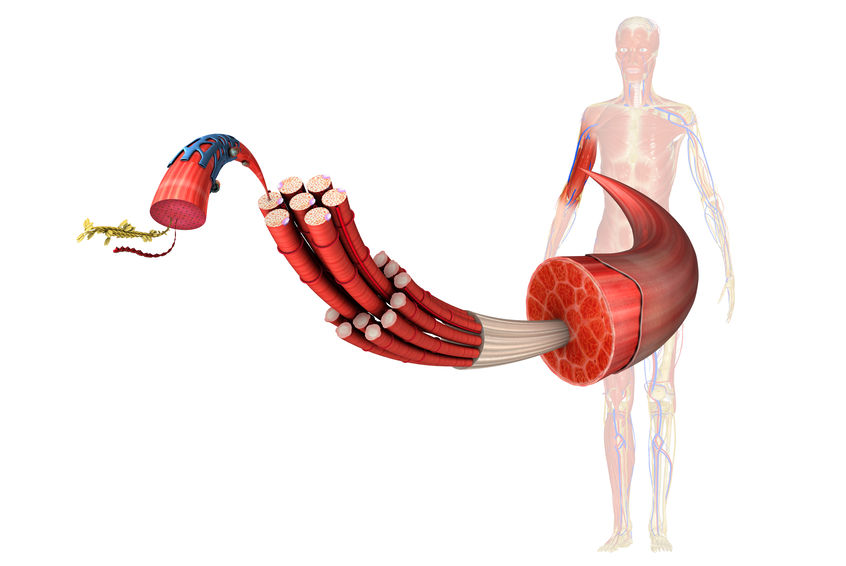Note that your final mark will not be saved in the system.
B4–B5 Skeletal Muscle Contraction and Fibre Types GapFill
You must fill all the gaps before clicking ‘Check Answers!’

There are three distinct types of muscle fibres found in the human body, categorised into slow- and fast-twitch fibre groups:
- Type I – Slow-twitch ( ) fibres
- Type IIa – Fast-twitch (oxidative-glycolytic) fibres
- Type IIx – Fast-twitch ( ) fibres
Each type has distinctive characteristics that determine its suitability for different intensities of exercise:
Type I
These have a high density, facilitating oxygen delivery to the muscle. They are used primarily for aerobic exercise as they are highly resistant to , so exercise is able continue for long periods of time. The slow speed of contraction thus helps conserve energy for the latter stages of exercise. For example, marathon running, open-water swimming, or race walking events heavily rely on Type I fibres for muscle contraction.
Type IIa
These are used in both aerobic and anaerobic exercise as they have a fast speed of and thus force production that can be sustained for an extended period of time. Therefore, they are suited to exercise that varies in , such as rugby, where players undergo periods when they are required to sprint to make a line break or tackle an opponent, interspersed with less-strenuous actions such as retreating into position when the ball is out of play.
Type IIx
These are used exclusively in high-intensity exercise. They have a low resistance to fatigue, meaning that exercise can be maintained only for a period of time. However, the speed of contraction allows the muscle to contract , exerting a large amount of force. Sporting examples include activities that require a large amount of force to be produced quickly, such as weightlifters performing the clean and jerk Olympic lift, a sprinter performing the 100 m, or an athlete throwing a shot.
Regardless of the intensity, the order of recruitment always remains the same and is known as the ' principle' – from Type I to Type IIa to Type IIx – the extent of which is determined by intensity. As exercise intensity increases, the speed and force requirements of the muscle , resulting in a preferential recruitment towards fibres that are capable of meeting these demands.